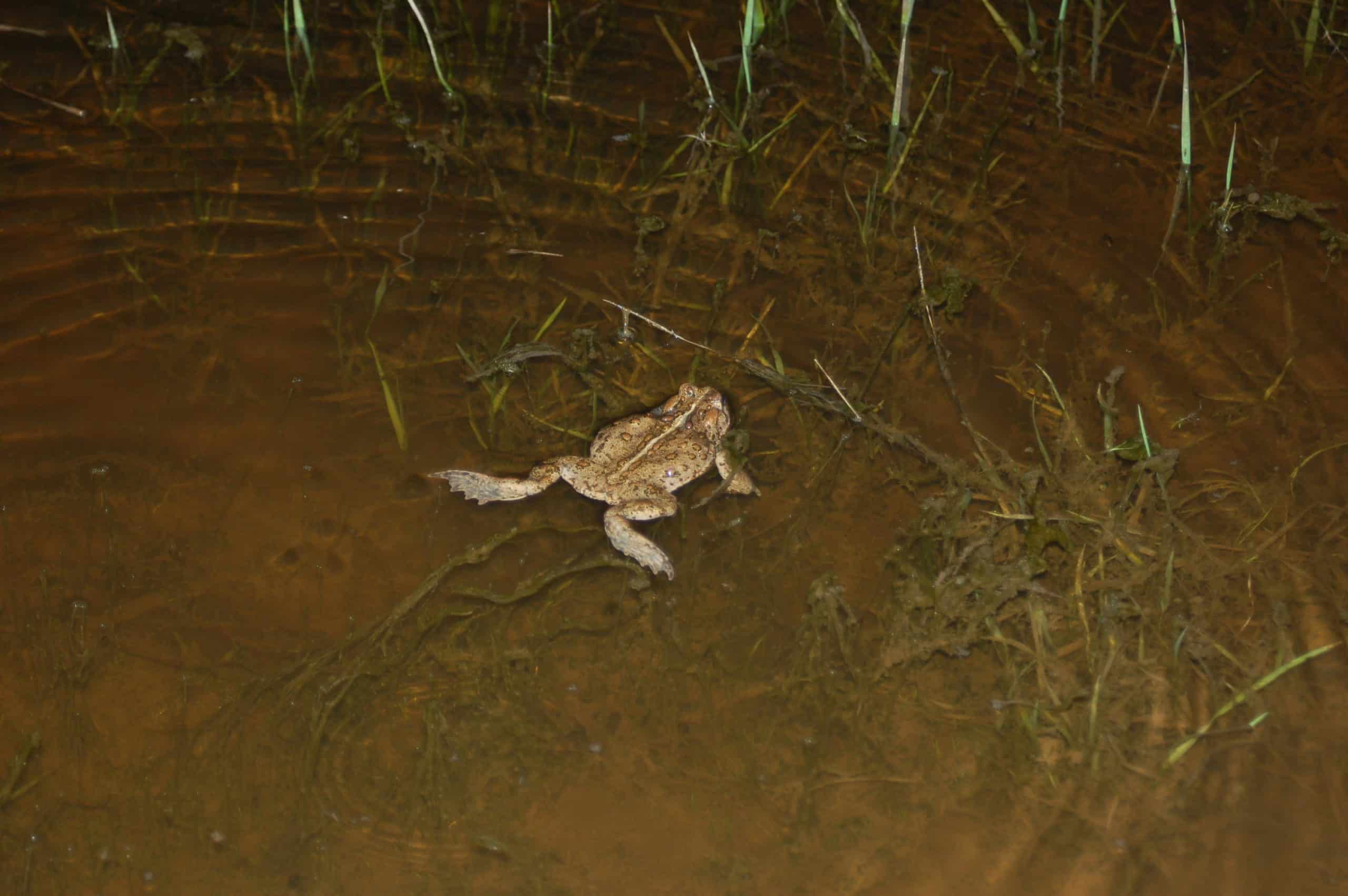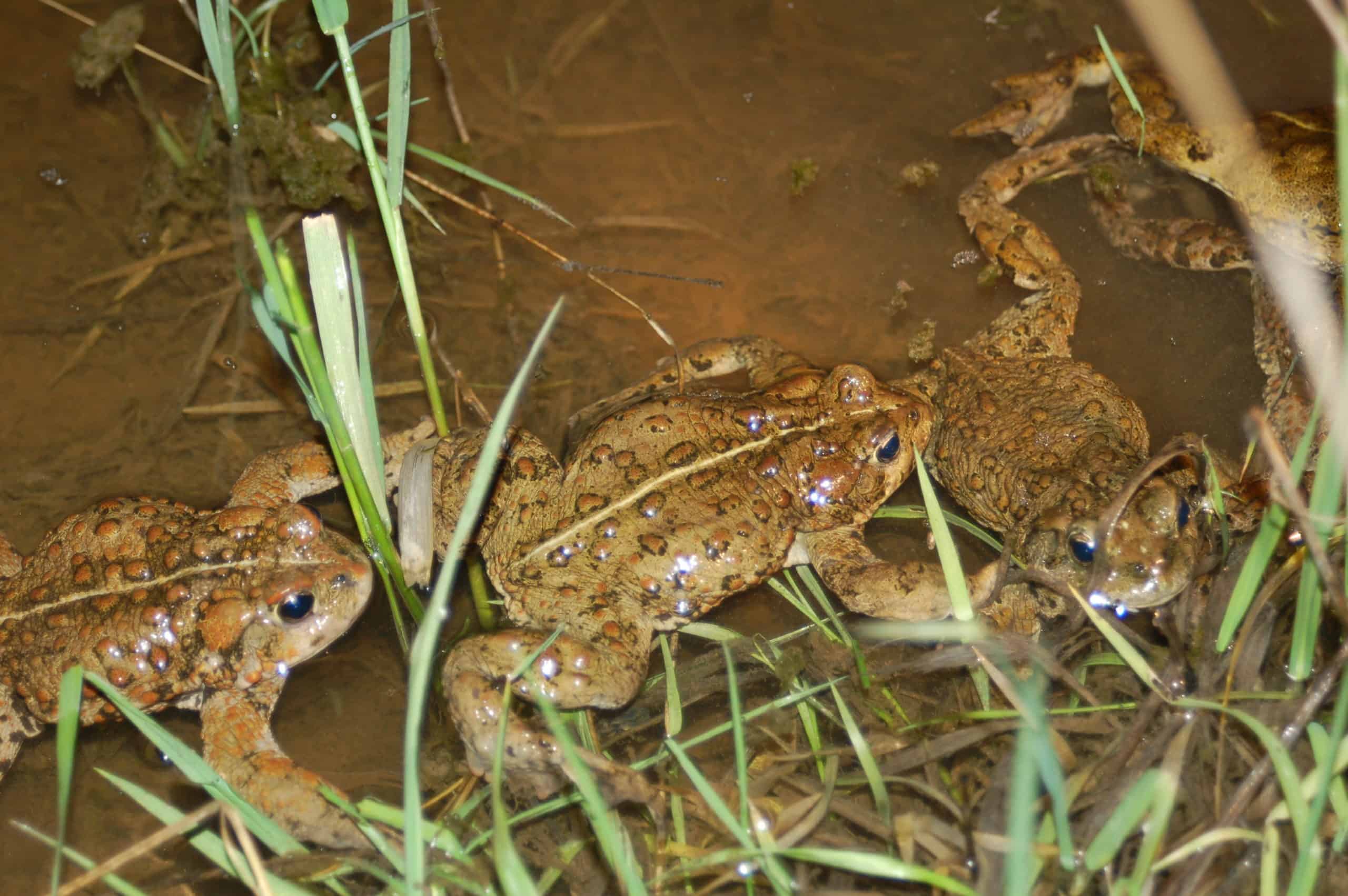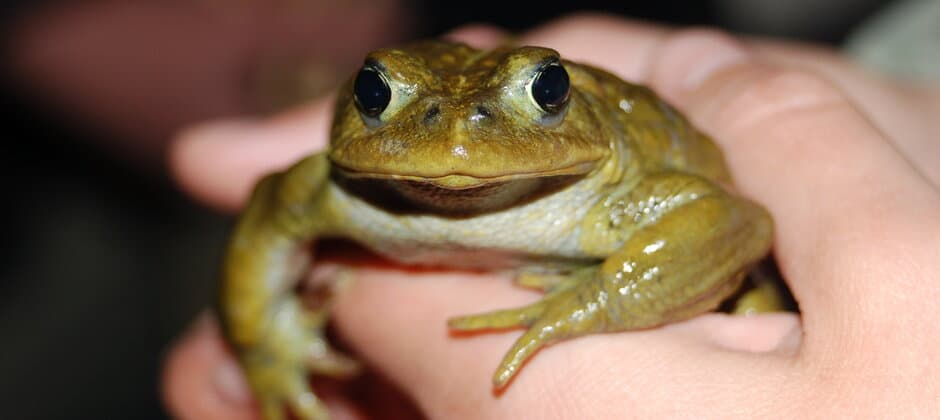Share this article
JWM: Boreal toads have become nearly extirpated in northwest Montana
A boreal toad population has become nearly extirpated in an area of western Montana that was relatively recently converted to a national wildlife refuge.
“In essence, what we found in the study period was this really precipitous decline in the toad population, both males and females,” said Rebecca McCaffery, a wildlife biologist with the U.S. Geological Survey.
McCaffery was working on an initiative to track the number of boreal toads (Anaxyrus boreas boreas) in the Lost Trail National Wildlife Refuge in northwestern Montana.

Boreal toads return to ponds to breed for three weeks every year in May in this part of Montana. Credit: Rebecca McCaffery
From 2003 to 2018, McCaffery and her colleagues captured adult toads during the three-week period in May when they return en masse to ponds to breed. As part of research published recently in the Journal of Wildlife Management, the researchers implanted pit tags underneath the skin on the toads’ backs.
They could then recapture the toads in following years as a means to determine survival.
In the 16-year period of their study, McCaffery and her colleagues found a massive population decline in their study area — a near extirpation, in fact. Numbers dropped from 450 toads in 2003 to zero in 2018.
The researchers aren’t completely clear why this occurred, especially since the area became a wildlife refuge shortly before the study period began.
They tested the adults they were tracking for the chytrid fungus, a disease that has caused large-scale population loss across the continent, but didn’t find any significant effects.
McCaffery speculated that the hydrological changes made to return the landscape to a more natural ecosystem may not have benefited the toads, at least in the short term.
The refuge used to be cattle ranch land that featured a number of artificial ponds and other water features. When the land was converted to a refuge in 1999, managers made several changes to the water system there in an attempt to revert the land back to a more natural hydrological system.
Typically, boreal toads prefer to breed in ponds with banks clear of vegetation. While the hydrological changes were made to benefit various species of waterfowl, fish and amphibians, it resulted in the flooding of many of the small ponds the toads favor for breeding.
“We weren’t able to directly test this, but there might have been some unintended consequences,” McCaffery said. “Restoration for one species may be detrimental to another species.”

Males wait in ponds for a couple of weeks for females, which come in, find a mate and lay eggs. Credit: Rebecca McCaffery
The local extirpation of the toads doesn’t necessarily mean they all died out though, she noted. They may have moved to ponds outside the study area. But the researchers found that the amphibians didn’t move to other suitable ponds that weren’t part of their historic breeding areas within the refuge when they were monitoring those areas.
Also, while chytrid disease didn’t seem to affect adults much, the researchers are still unclear what happened to the juveniles in this population. While hundreds or even thousands of young toads emerge from these ponds, they are too small to implant with pit tags. It often takes several years before they reach sexual maturity and return to the pond. Something could be happening in this intermittent period that is currently unclear to researchers.
“There’s this whole life stage we don’t really know that much about,” McCaffery said.
But their study did reveal that juvenile recruitment was low in this population. The larger frogs that returned to breed seemed to be healthy. So whatever was happening to the frogs affected the younger ones more than the older ones.
This article features research that was published in a TWS peer-reviewed journal. Individual online access to all TWS journal articles is a benefit of membership. Join TWS now to read the latest in wildlife research.
Header Image: Boreal toads were captured at night when they are active at breeding pools. Credit: Rebecca McCaffery








